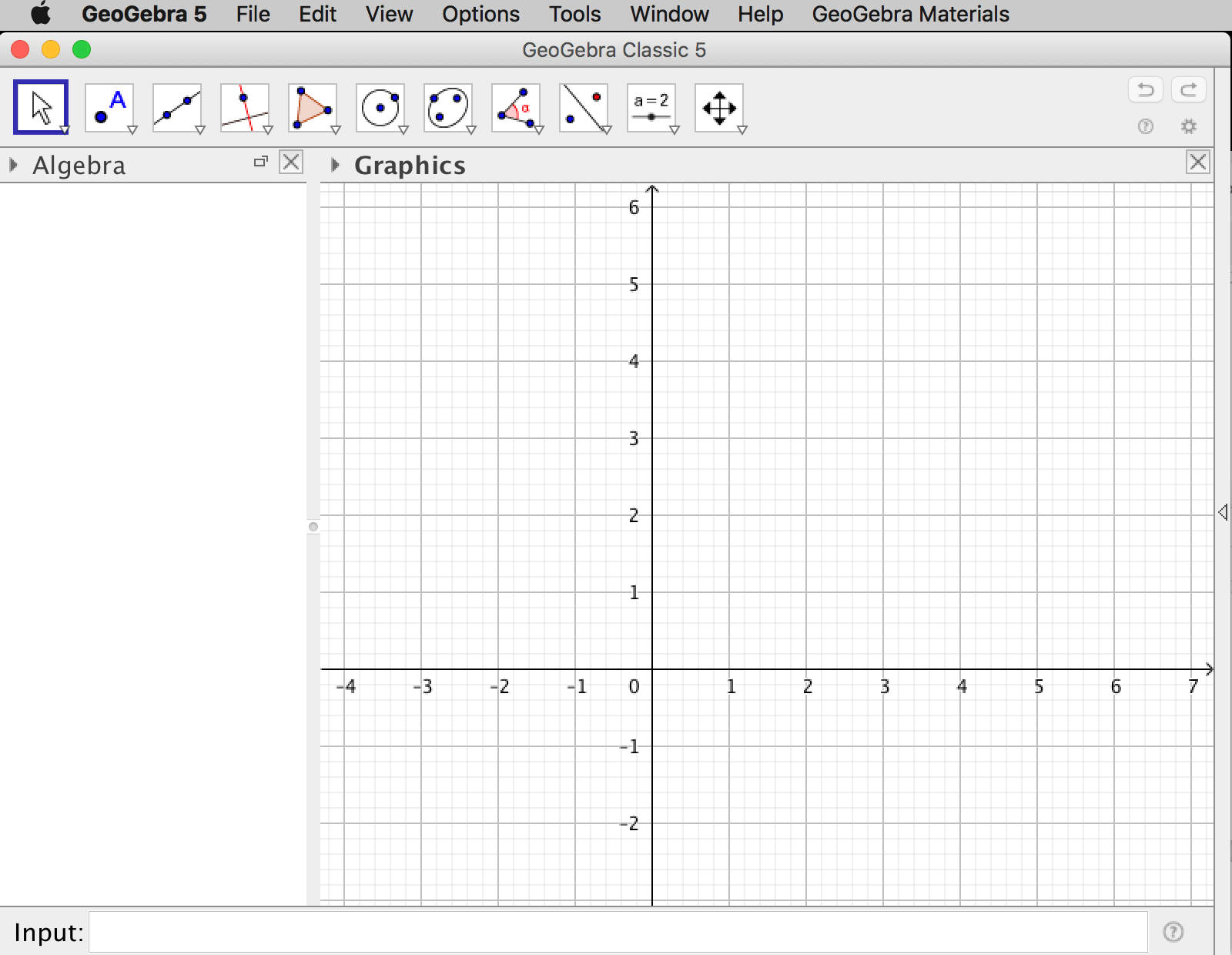
You can also use draggable points on the display for user input - as we will see getting into the Geometry part of GeoGebra.

Editing a slider will give you options about the variable - its minimum, maximum, and step values - which allow for basic user input. If you just type in a variable name, it will create a Slider. Today will very much continue that trend. The scripting language is based heavily on JavaScript, a language we have danced around but never talked about in depth. We won't be using them today, but they allow for the construction of complicated interactable figures with conditionals and computations - which you can share on the internet, or as. Other TabsĬolor and Style are fairly self-explanatory, but it is worth noticing the Advanced and Scripting tabs. In GeoGebra, you will often be building objects out of other objects in a constructive way, so being able to hide this "construction geometry" is remarkably helpful. The caption is notable that - like a Text object - it can contain (a subset of) $\LaTeX$, so we can label our graphs with familiar notation. The Show options, which can hide an object or its label from view.The caption, which we can display next to the function in the view.The definition, in case we want to change how it is defined.The name (which is mainly used for referring to it in other object construction).The Basic menu sets up a few main properties of note: Play around with these options - they offer a wide variety of customization. Whatever object is selected, can be customized. Most objects - including the canvas itself - can be customized from the settings menu, accessible from the gear in the upper left corner. Geo Gebra is actually a highly featured Computer Al gebra System - and has its own language which can be used to construct, and compute on, objects.įortunately, when graphing or exploring, none of that is necessary - we can construct our functions with the input bar and the simple tools in the toolbars.

Click it and type a function, like $x(x-1)(x-2)$. The default GeoGebra view, which you will get to by clicking "Start Calculator" or by launching a downloaded GeoGebra Classic, is set up around plotting.
Geogebra classic geometry download#
The tools remain virtually identical, just reshuffled a bit, so you can follow along on whatever GeoGebra platform - download or web - you wish. GeoGebra is undergoing a fair bit of unbundling, but I am still fond of the Classic Interface. While not quite optimized for mathematical research, it can be a great graphing tool, interactive teaching and assessment tool, mathematical aid, or just a fun toy. GeoGebra is a wide variety of integrated technologies in one package - a Computer Algebra System, 2D and 3D Graphing Calculator, 2D and 3D Constructive Geometry Solver, Spreadsheet system, and more.

Many of the things we will say also apply to the for-profit clone Desmos, but there is little reason to support corporate power-grabs no matter how many non-binding assurances they make on their website of their good intent. Today we will be talking about two tools that are excellent for creating intricate graphics with very fine control, embedded $\LaTeX$, and scalable output. Graphing in this plot-look-modify-plot loop is OK, but it can be both unintuitive and hard to control specific details.


 0 kommentar(er)
0 kommentar(er)
